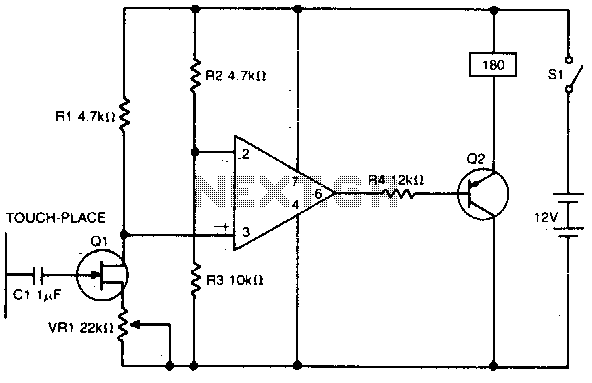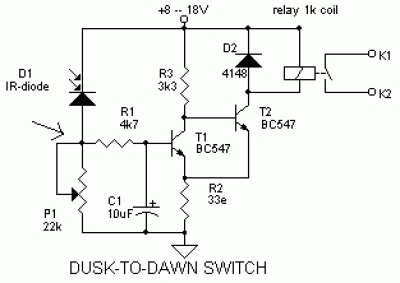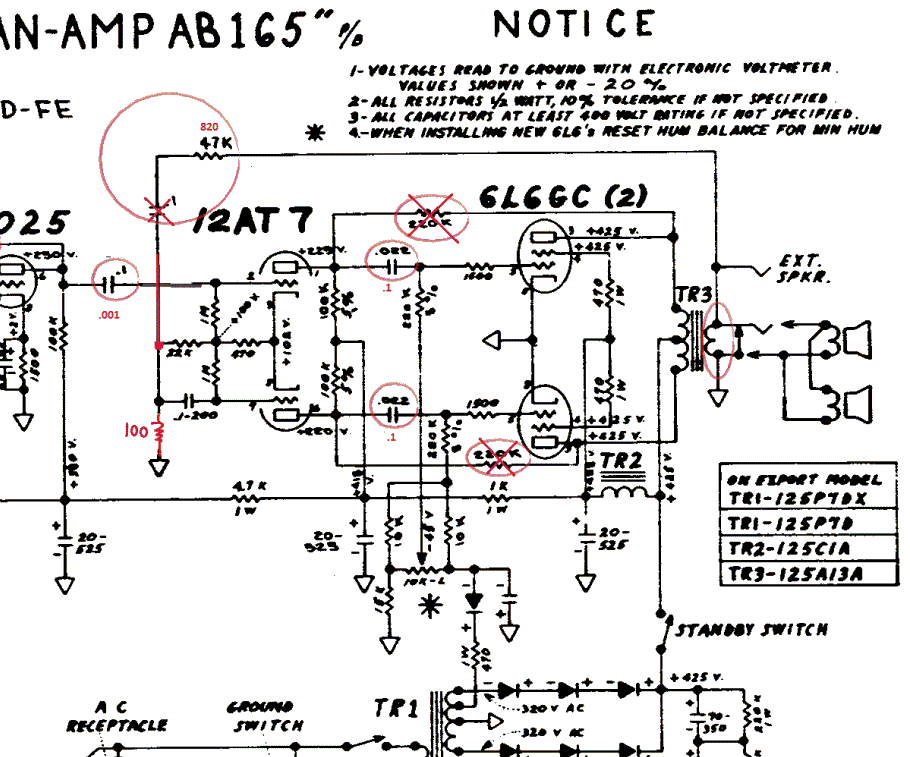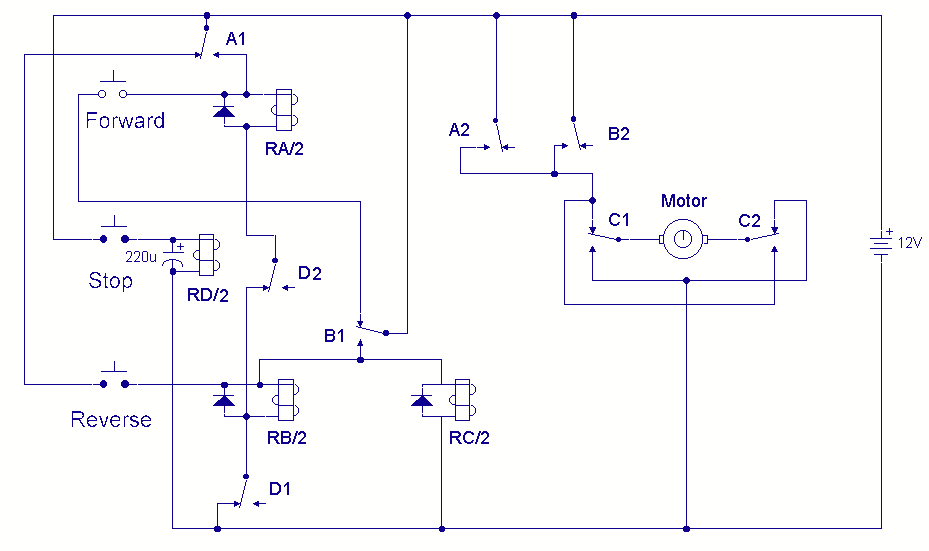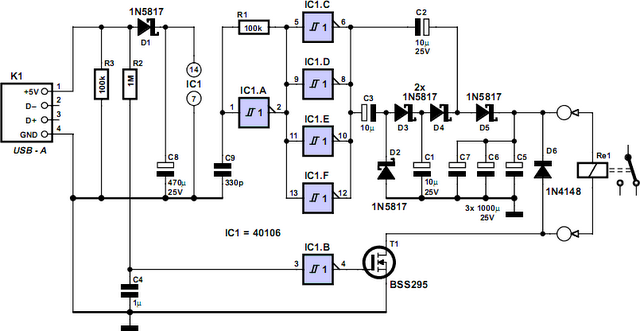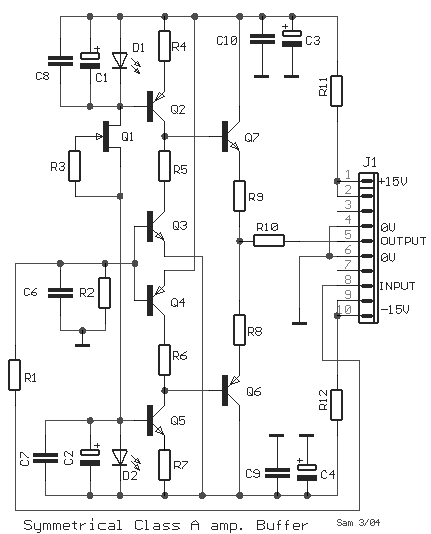
Capacitive Dimmer switch circuit
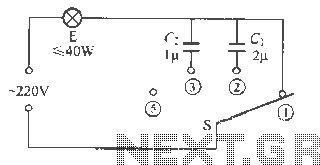
The capacitive dimmer switch circuit is illustrated in Figure 9. It operates based on the principle of capacitive reactance with alternating current. When the switch is in the position shown, the normal light bulb operates at maximum brightness. When the dial is turned to a specific position, a capacitor (C) is connected in series with the circuit, which reduces the brightness of the bulb. As the capacitance increases, the brightness further decreases until the bulb is turned off when the dial reaches a certain position. The circuit utilizes a non-polar oil paper capacitor rated for 100V and employs a single-pole four-throw switch (S).
The capacitive dimmer switch circuit functions by leveraging the properties of capacitive reactance, which allows for the control of AC current flow to a load, in this case, a light bulb. The circuit includes a non-polar oil paper capacitor (C) that is connected in series with the light bulb. The switch (S) is a single-pole four-throw type, enabling the user to select different brightness levels by adjusting the dial.
In the maximum brightness setting, the circuit is complete without any capacitive interference, allowing full voltage to reach the light bulb. As the user rotates the dial to introduce the capacitor into the circuit, the capacitive reactance increases, which in turn reduces the effective voltage across the light bulb. The reduction in voltage leads to a decrease in light output, allowing for dimming functionality.
The circuit is designed to operate at a voltage rating of 100V, suitable for standard household lighting applications. The choice of a non-polar capacitor is critical, as it allows for AC operation without concern for polarity, ensuring reliable performance.
The dimmer circuit is particularly useful in applications where adjustable lighting is desired, such as in living rooms, theaters, and dining areas. By providing a smooth transition between brightness levels, it enhances the ambiance and user experience. The simplicity of the design, combined with the effectiveness of capacitive reactance, makes this circuit a practical solution for modern lighting control.Capacitive dimmer switch circuit shown in Figure 9. It is the use of capacitive reactance principle of alternating pairs made. S When the position shown, normal light bulb E, namely the maximum brightness; when dial to position when Gushan string into 2VF capacitor C. Lamp brightness decreases E; when the time is set aside to busy , solid C, <e. , Larger capacitance, reduce the brightness of the fork of a small block; when the dial to position , light E off.
c. , C Gallery using voltage 100V to f nonpolar oil paper capacitor, S to l 4 single-pole four-throw switch.
The capacitive dimmer switch circuit functions by leveraging the properties of capacitive reactance, which allows for the control of AC current flow to a load, in this case, a light bulb. The circuit includes a non-polar oil paper capacitor (C) that is connected in series with the light bulb. The switch (S) is a single-pole four-throw type, enabling the user to select different brightness levels by adjusting the dial.
In the maximum brightness setting, the circuit is complete without any capacitive interference, allowing full voltage to reach the light bulb. As the user rotates the dial to introduce the capacitor into the circuit, the capacitive reactance increases, which in turn reduces the effective voltage across the light bulb. The reduction in voltage leads to a decrease in light output, allowing for dimming functionality.
The circuit is designed to operate at a voltage rating of 100V, suitable for standard household lighting applications. The choice of a non-polar capacitor is critical, as it allows for AC operation without concern for polarity, ensuring reliable performance.
The dimmer circuit is particularly useful in applications where adjustable lighting is desired, such as in living rooms, theaters, and dining areas. By providing a smooth transition between brightness levels, it enhances the ambiance and user experience. The simplicity of the design, combined with the effectiveness of capacitive reactance, makes this circuit a practical solution for modern lighting control.Capacitive dimmer switch circuit shown in Figure 9. It is the use of capacitive reactance principle of alternating pairs made. S When the position shown, normal light bulb E, namely the maximum brightness; when dial to position when Gushan string into 2VF capacitor C. Lamp brightness decreases E; when the time is set aside to busy , solid C, <e. , Larger capacitance, reduce the brightness of the fork of a small block; when the dial to position , light E off.
c. , C Gallery using voltage 100V to f nonpolar oil paper capacitor, S to l 4 single-pole four-throw switch.
